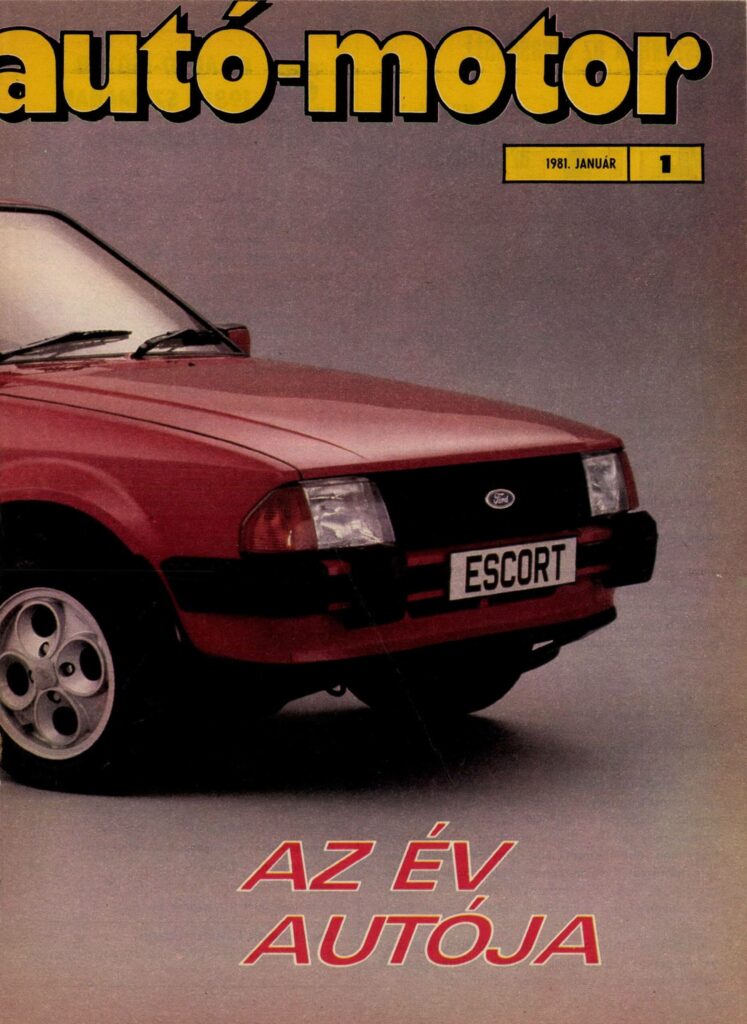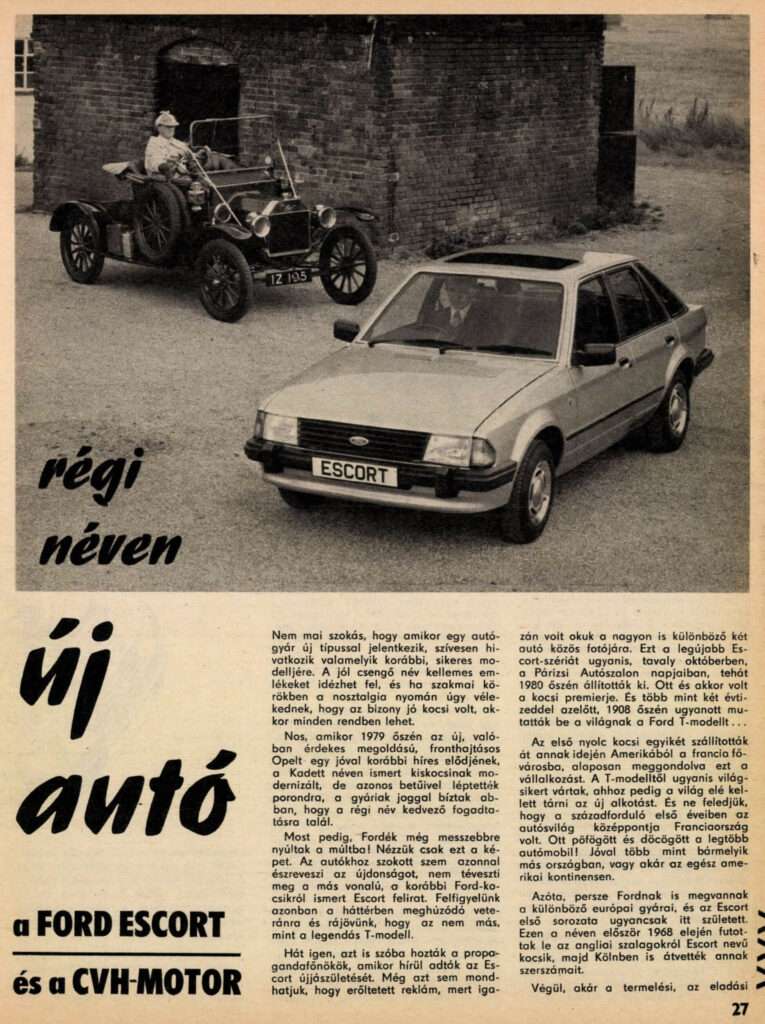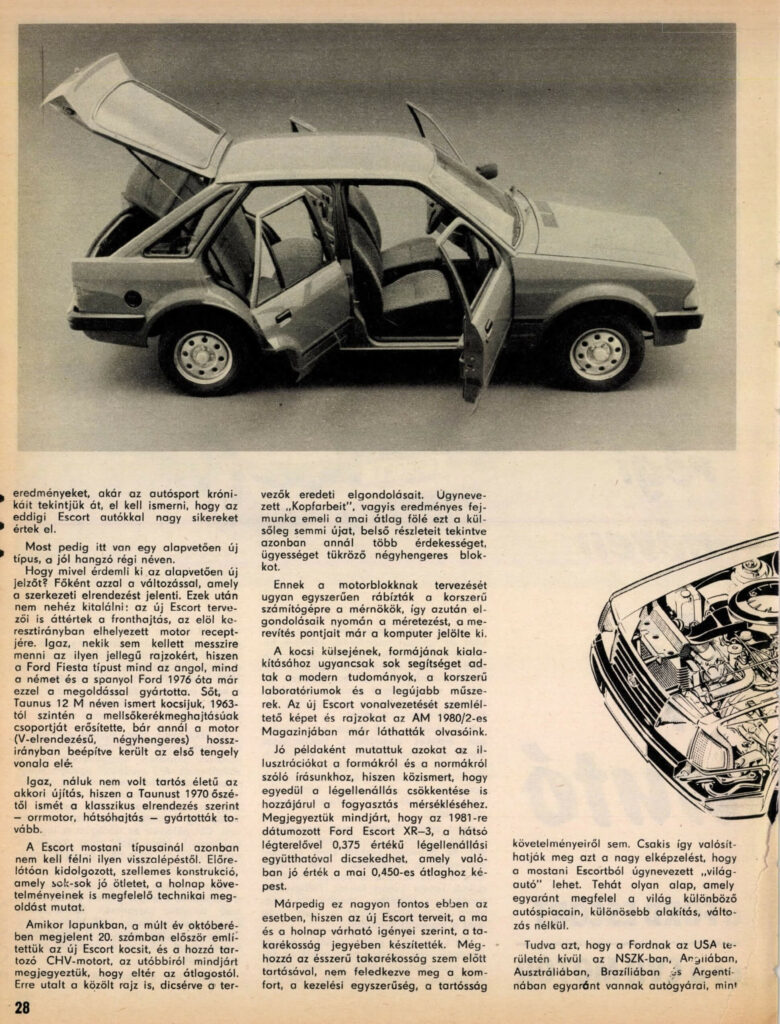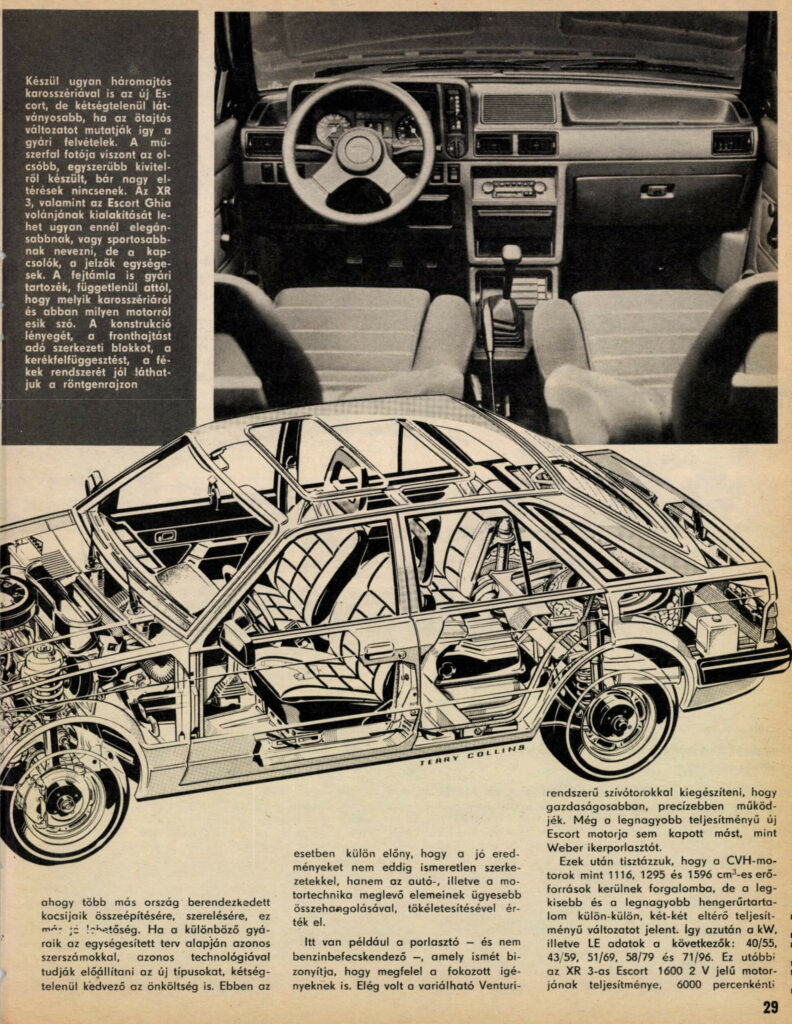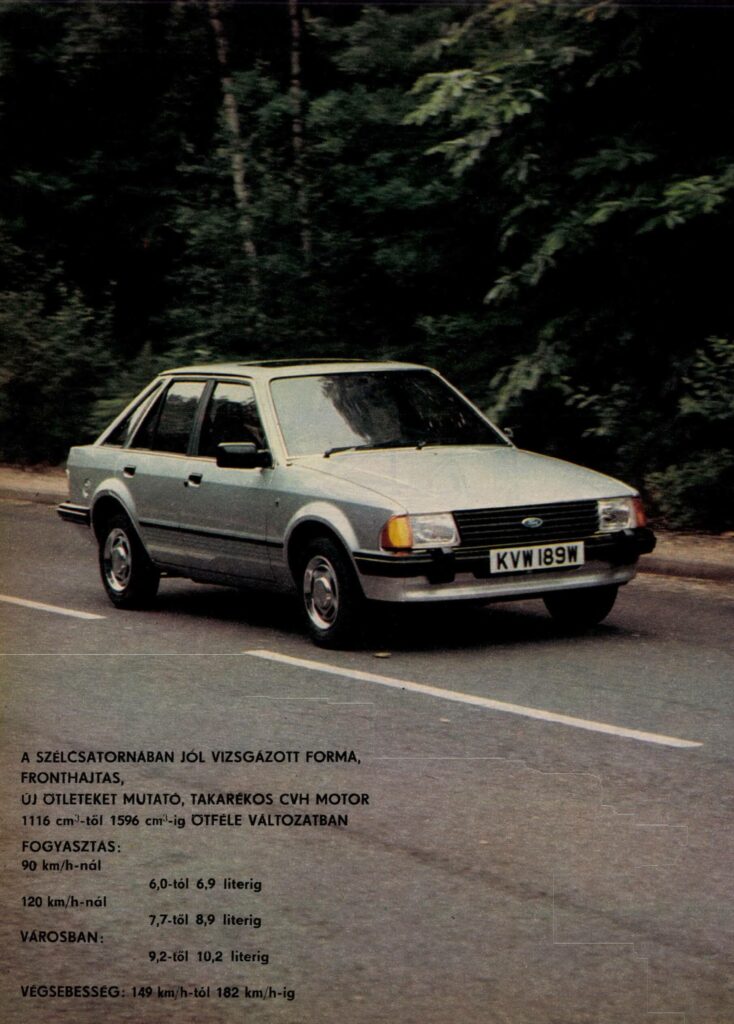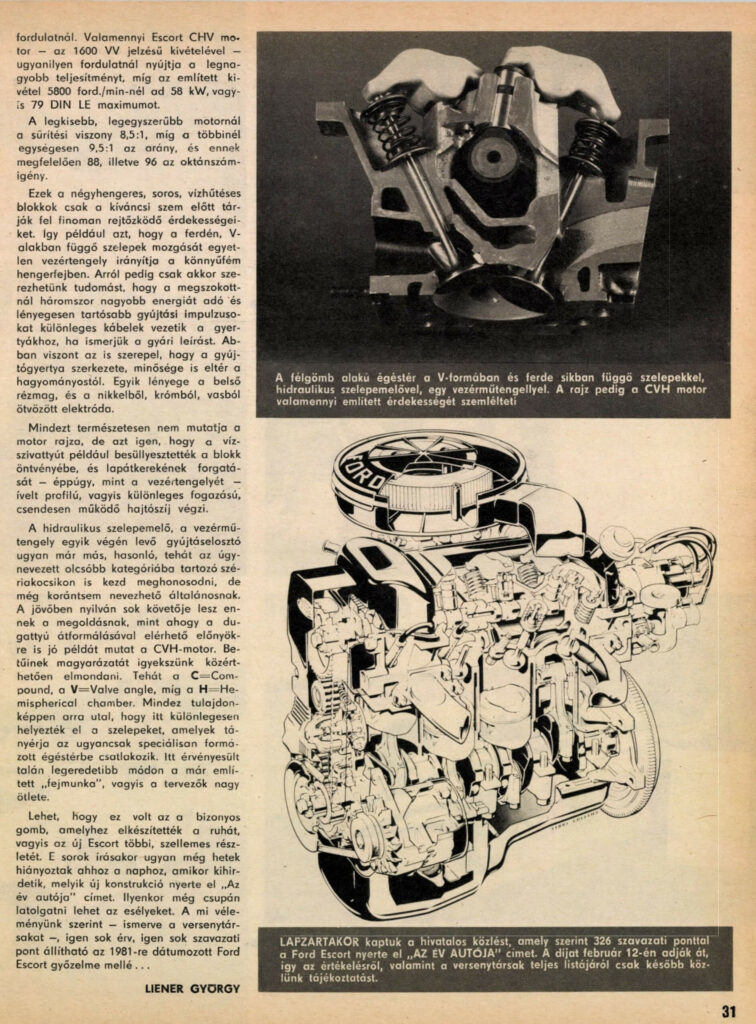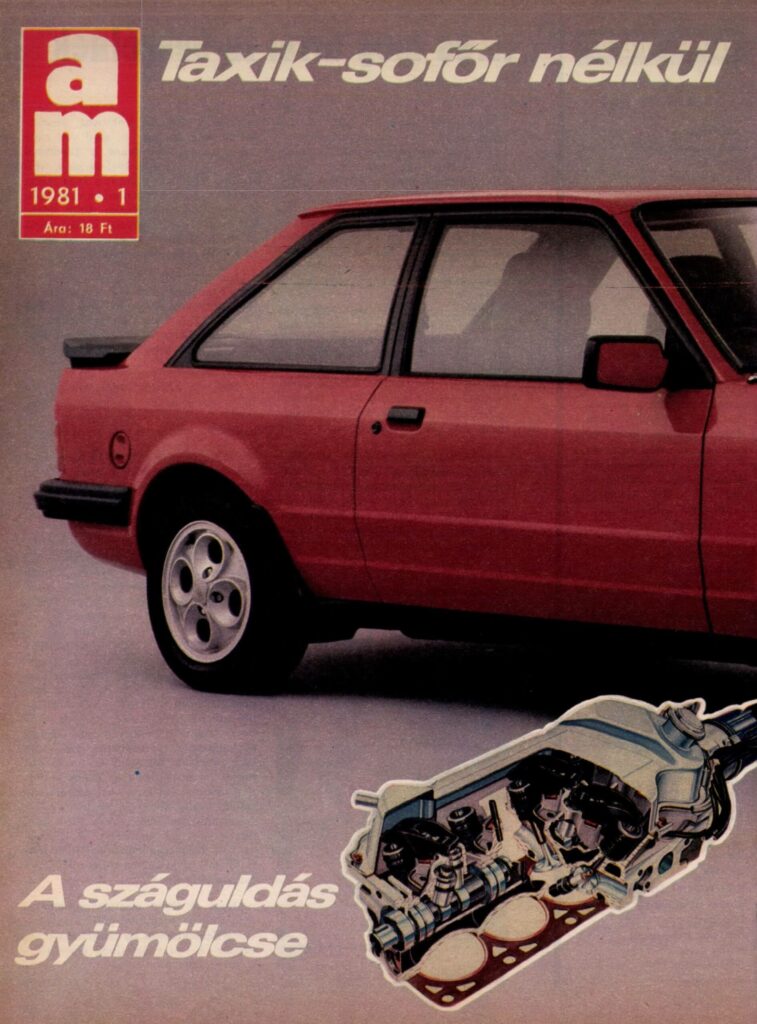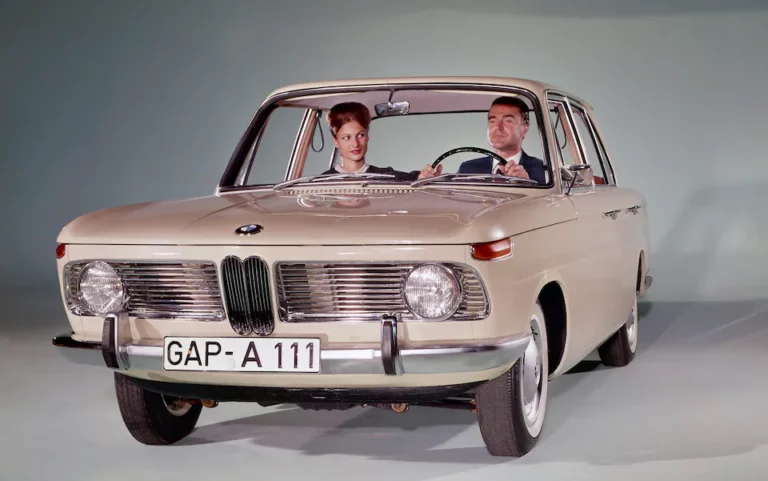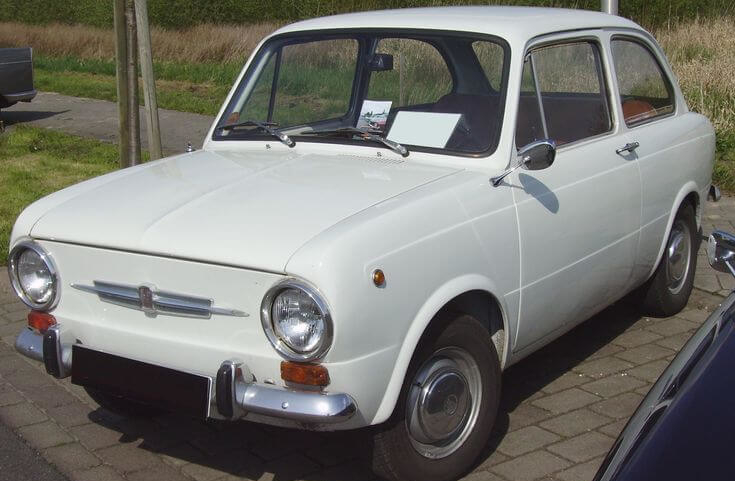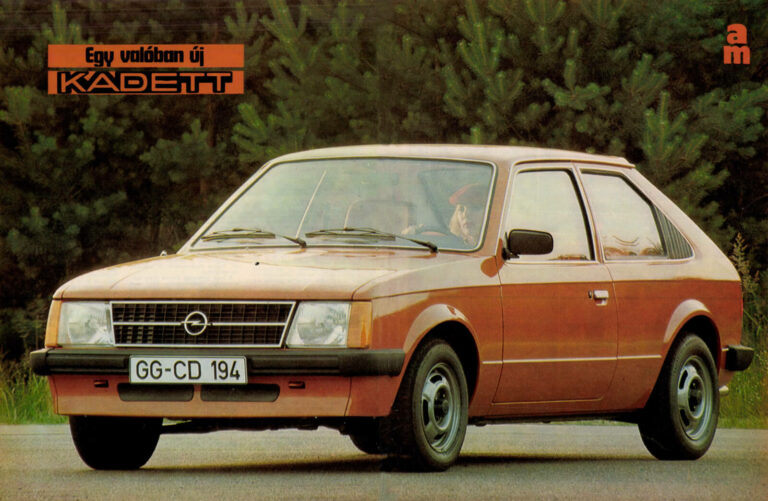1981 - Car of the year with CVH engine
or the then new Ford Escort
January 1981in the AM last autumn, the Ford Escort, truly renewed in all its aspects, was György Liener from the pen.
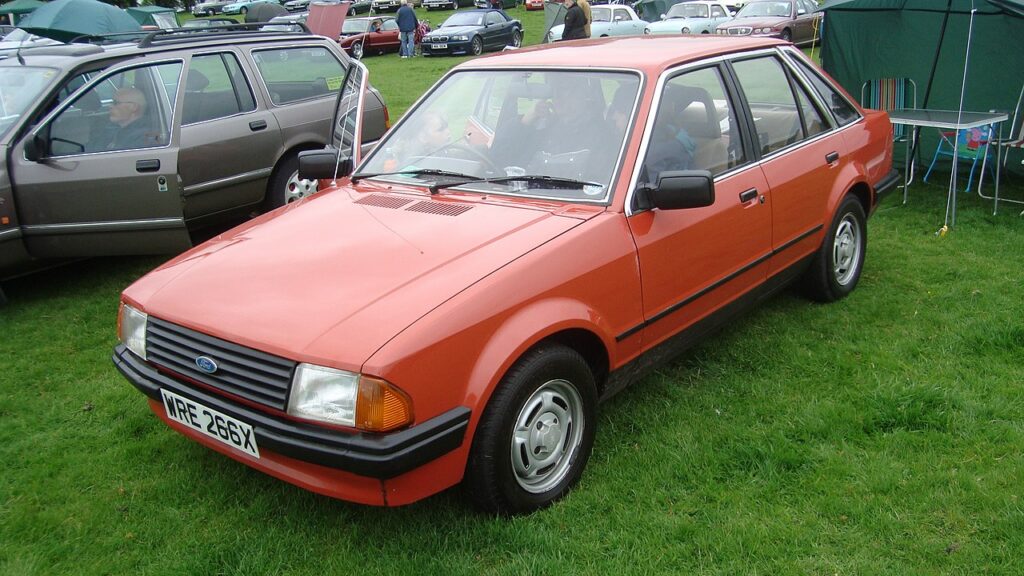
Ford Escort MK3 1,3 GL 1982 Image source: wiki / Kieran White
The third-generation Escort was launched in September 1980 and was only the second front-wheel-drive car to be produced by Ford's European division. While the second generation Escort was basically a rebadged version of the first, the third was completely redesigned from the ground up and was intended to be a rival to the VW Golf. The design of the car followed Ford's design language of the time, with, for example, the black grille and the jagged tail lights. The 'Aeroback' boot lid design reduced the car's drag coefficient to 0.37, which made it a class leader at launch, but the real innovation was the newly developed overhead cam engine, called the CVH (combined valve angle hemispherical combustion chamber).
The CVH engine is named after the shape of the combustion chamber in the cylinder head. This design positioned the valves (and the intake and exhaust ports) opposite each other, allowing better flow conditions than with valves positioned side by side. The spark plug is located between the two valves in the centre of the combustion chamber. The engine was used throughout most of the Escort's (and Ford's) production run, and was largely superseded by the Focus and Zetec engines at the end of the Escort's production run.
A CVH motoros Escort-was elected in 1981 to the Car of the Year. In the poll, the Fiat Panda came second and the Austin Metro third.
Below you can read a full transcript of the article published in January 1981, and at the end you will find a photo gallery with pictures of the articles.
♠
old name for new car
the FORD ESCORT and the CVH engine

It's not unusual for a car manufacturer to refer to a previous successful model when introducing a new model. A good-sounding name can bring back pleasant memories, and if nostalgia in professional circles leads to the view that it was a good car, then all may be well.
Well, when the new, truly interesting front-drive Opel was launched in the autumn of 1979 with a modernised version of its famous predecessor, the Kadett, but with the same letters, the factory was rightly confident that the old name would be well received.
Now, the Fords have reached even further into the past! Just look at this picture. An eye used to cars will immediately notice the novelty, not fooled by the different lines of the Escort badging familiar from previous Ford cars. But look at the veteran in the background and you realise it's none other than the legendary Model T.

Yes, that was also mentioned by the propaganda chiefs when they announced the rebirth of the Escort. You can't even say it was forced publicity, because there was a real reason for them to have a photo of two very different cars together. This latest Escort series was exhibited last October, during the Paris Motor Show, in the autumn of 1980. It was there and then that the car premiered. And more than seven decades before that, in the autumn of 1908, the Ford Model T had been unveiled to the world. . .
One of the first eight wagons was transported from America to the French capital at the time, after careful consideration. The Model T was expected to be a worldwide success, and to achieve this, the new creation had to be shown to the world. And let's not forget that France was the centre of the motoring world at the turn of the century. That's where most of the automobiles were banging and banging! Far more than in any other country, or even in the whole of the Americas.
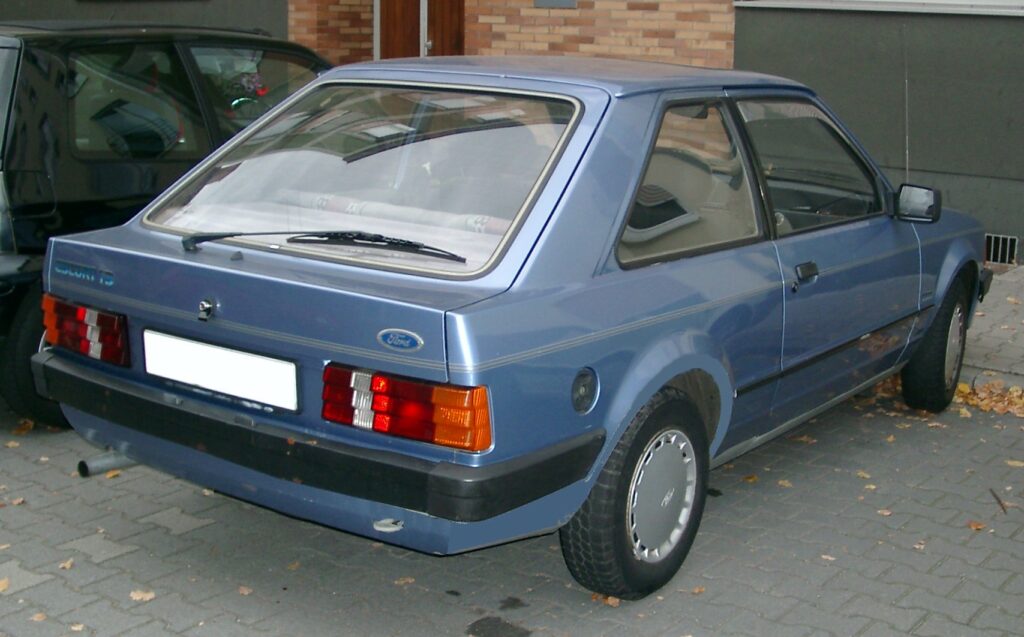
The three-door - Image source: image source: wiki / Rudolf Stricker
Since then, of course, Ford has had its various European factories, and the first Escort range was also born here. It was under this name that cars called Escort first rolled off the production lines in England in early 1968, and its tooling was adopted in Cologne.
Finally, whether we look at production, sales results or the chronicles of motor sport, it must be admitted that the Escort cars have been a great success so far.

Now here's a fundamentally new type, with the good old name.
What earns it the essentially new adjective? Mainly by the change in the structural layout. It's not hard to guess: the designers of the new Escort have also gone for the front-wheel drive, transverse engine at the front. True, they didn't have to go far for such a design, as the Ford Fiesta had been produced by Ford of England, Germany and Spain since 1976. In fact, their car, known as the Taunus 12 M, also joined the group of front-wheel drive cars from 1963, although the engine (V-configuration, four-cylinder) was mounted longitudinally in front of the front axle line.

However, the innovation was not long-lived, as the Taunus was again produced according to the classic layout - front engine, rear-wheel drive - from the autumn of 1970.
But with current Escort models, there is no need to fear such a step backwards. It's a forward-thinking, witty design, with lots of good ideas and technical solutions that meet the requirements of tomorrow.
When we first mentioned the new Escort car and its CHV engine in our October 20 issue last year, we noted that the latter was different from the average. The drawing we published referred to this, praising the designers' original ideas. The so-called "Kopfarbeit", or "headwork", or "headwork", is what makes this four-cylinder block, which is nothing new externally but has a lot of interesting and clever internal details, above the average of today.

The engineers simply entrusted the design of this engine block to a modern computer, and the computer then used their ideas to determine the dimensions and the points of stiffening.
Modern science, state-of-the-art laboratories and the latest instrumentation have also helped a lot in shaping the car's appearance and form. A picture and drawings illustrating the lines of the new Escort have already been shown in AM Magazine 1980/2.
We have shown those illustrations as a good example for our article on shapes and standards, as it is well known that reducing air resistance alone can help reduce consumption. We noted in passing that the Ford Escort XR-3, dated 1981, with the rear air dam, boasts a drag coefficient of 0.375, which is a good figure compared with today's average of 0.450.
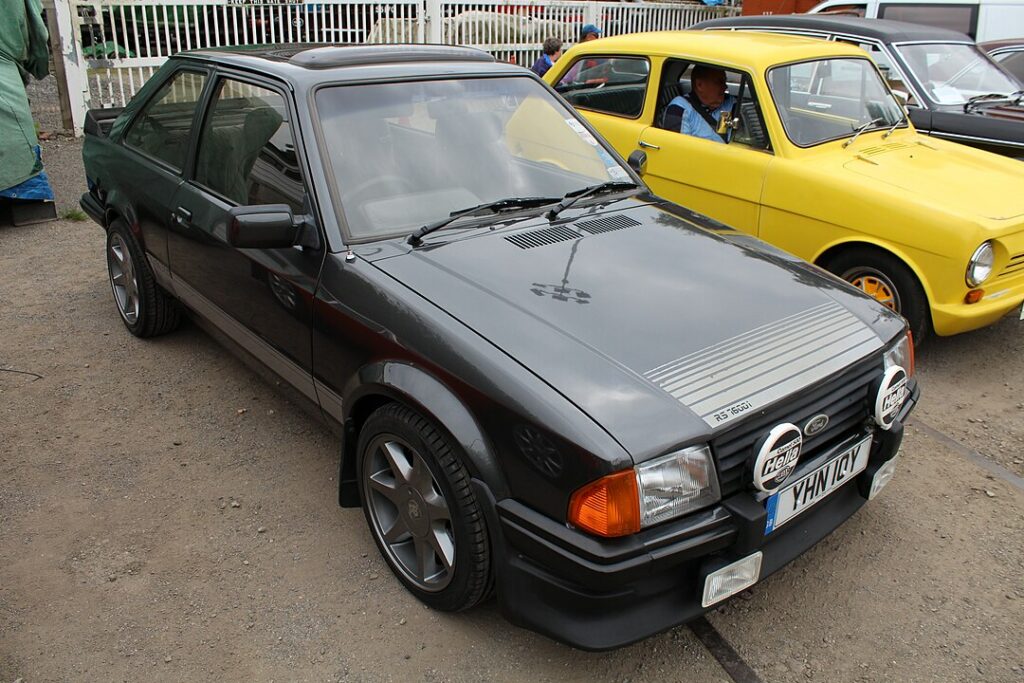
The limited edition Ford Escort RS1600i - Image source: wiki / Thomas's Pics
And that's very important in this case, because the new Escort has been designed with the needs of today and tomorrow in mind, and with a focus on economy. And they have been designed with sensible economy in mind, without forgetting the requirements of comfort, ease of use and durability. This is the only way to achieve the grand vision of making the Escort a 'world car'. In other words, a base that is equally suited to the various car markets of the world, without any special modifications or changes.
Knowing that Ford has factories in the US, the UK, Australia, Brazil and Argentina, as well as many other countries that are set up to assemble their cars, this is a good opportunity. If their various factories can produce new models on the basis of a standardised design, using the same tools and the same technology, the cost price is undoubtedly favourable. In this case, it is particularly advantageous that the good results are not achieved with previously unknown structures, but by more skilful coordination and perfection of existing elements of car and engine technology.
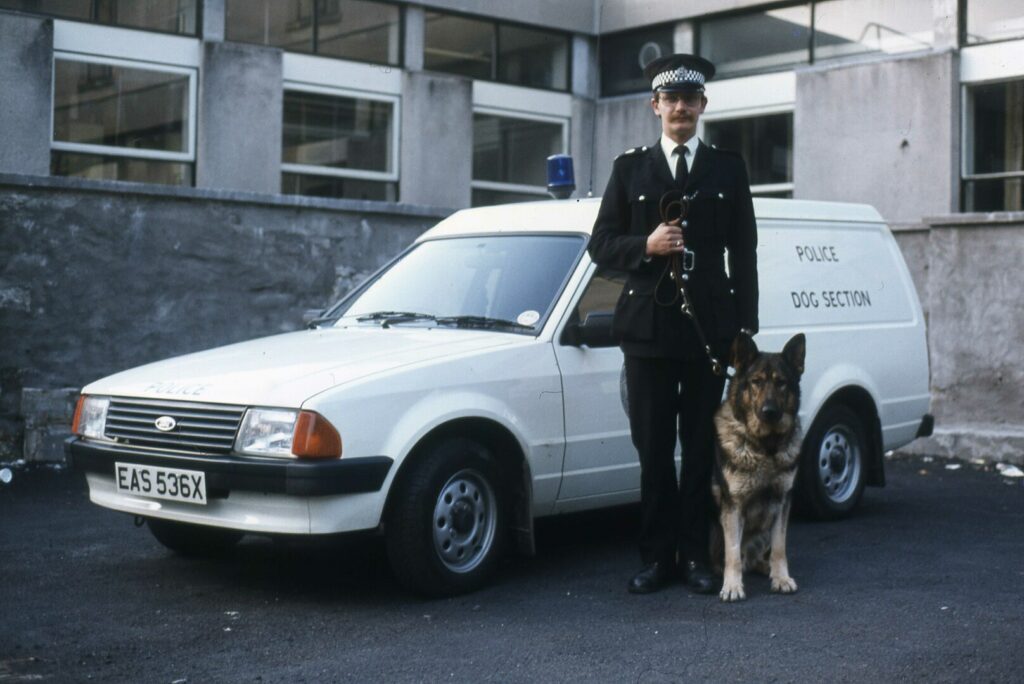
Escort Van used as a police dog carrier - Image source: wiki / Dave Conner
Here, for example, is the carburettor - and not the fuel injector - which once again proves that it can meet the increased demands. It was enough to add variable Venturi-type intake ports to make it more economical and precise. Even the new Escort's most powerful engine is equipped with nothing more than a Weber twin carburettor.
To clarify, the CVH engines are marketed as 1116, 1295 and 1596 cc engines, but the smallest and largest displacements are two different power outputs. Thus, the kW and HP figures are 40/55, 43/59, 51/69, 58/79 and 71/96 respectively, the latter being the power output of the Escort 1600 2 V engine in the XR 3 at 6000 rpm. All Escort CVH engines, except the 1600 VV, have the same maximum power at the same rpm, while the exception mentioned above gives a maximum power of 58 kW or 79 DIN hp at 5800 rpm.
The smallest, simplest engine has a compression ratio of 8.5:1, while the others have a uniform ratio of 9.5:1, and corresponding octane requirements of 88 and 96 respectively.

These four-cylinder, in-line, water-cooled blocks reveal their subtle hidden curiosities only to the curious eye. For example, the fact that the valves, which are suspended at an angle in a V-shape, are controlled by a single camshaft in the light-alloy cylinder head. And you only find out that the ignition pulses, which deliver three times more energy than usual and are much more durable, are fed to the spark plugs by special cables if you know the factory specifications. However, it also states that the construction and quality of the spark plugs are different from traditional ones. One of the main features is the inner copper core and the electrode, which is made of nickel, chromium or iron.
Of course, the engine drawing does not show all this, but it does show that the water pump, for example, is recessed in the block casting and that its impeller, like the camshaft, is driven by a silent drive belt with a curved profile and special teeth.
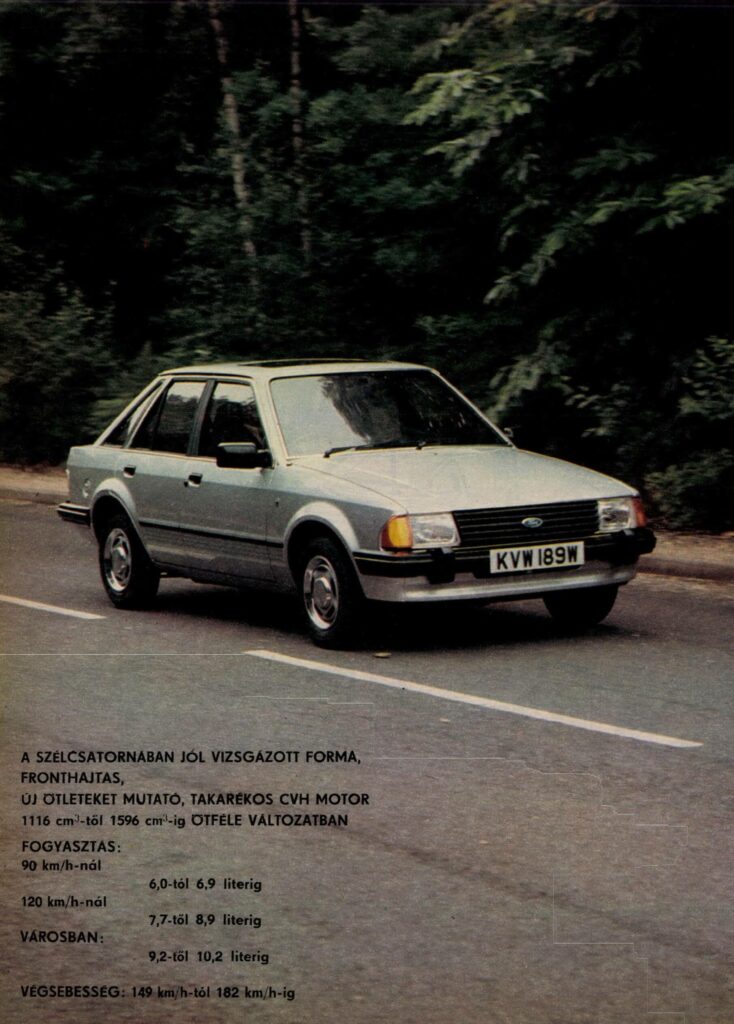
The hydraulic valve lifter, an ignition distributor at one end of the camshaft, is becoming common on other, similar, so-called cheaper production cars, but it is far from being universal. In the future there will obviously be many followers of this solution, just as the CVH engine is a good example of the advantages to be gained by reshaping the piston. We will try to explain its letters in plain language. So C-Compound, V-Valve angle, while H-Hemispherical chamber. All this actually refers to the special positioning of the valves, the bowl of which is connected to the combustion chamber, which is also specially shaped. This is perhaps where the aforementioned 'headwork', or the designers' big idea, is most clearly demonstrated.
It may have been the button for which they made the suit, or rather the other witty details of the new Escort. At the time of writing, weeks were still to go before the day when the new car of the year would be announced. At this stage, the odds are still up for grabs. In our opinion, knowing the competition, there are many arguments and many points to be made for the victory of the Ford Escort, which dates back to 1981. .
MR LIENER
